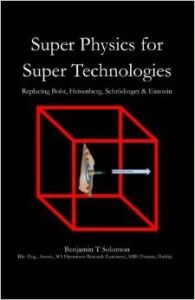Apr 21, 2015
Noether’s Theorem + Equivalence Principle = c-global (part IV, coda)
Posted by Otto E. Rössler in categories: existential risks, particle physics
The retrieved global constancy of c in the equivalence principle implies that the vertical distance to the surface of the neutron star has increased compared to the traditional view: the indentation into the “cloth” of spacetime has become deeper.
The stronger the gravitational acceleration, the deeper the trough. The new globally constant-c result due to Noether implies that the spatial distance right down to the “horizon” (surface) of a black hole has become infinite. This novel spatial distance valid from the outside corresponds with the well-known infinite temporal distance valid from the outside for light sent down to, or coming up from, the horizon (Oppenheimer and Snyder, 1939).
So black holes are never finished in finite outer time. But I hear you ask: Is it not quite well known that one can fall-in onto a large black hole in finite astronaut time? Yes, this is correct.
How come? This is the last Noetherian point: The on-board clocks of the astronaut are infinitely slowed. Also our rotating wheel comes to a virtual standstill of its rotation on the horizon (the tangential velocity of the wheel staying invariant in reality while the wheel’s diameter invisibly approaches infinity).
Continue reading “Noether’s Theorem + Equivalence Principle = c-global (part IV, coda)” »








